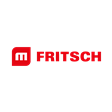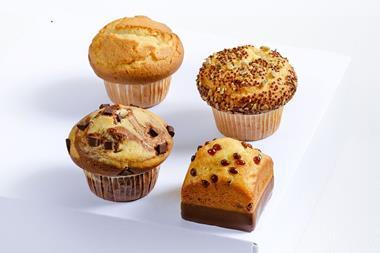The challenging modern bakery market requires manufacturers to be increasingly flexible in their approach in order to meet changing consumer trends, while still optimising efficiency. But that flexibility means looking beyond just the traditional high-speed processing lines and tailoring their approach, says Fritsch.
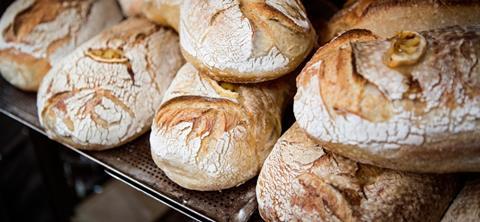
Today’s modern bakery manufacturers are facing the growing challenge that shifting consumer demand presents – namely, the diversity and variety of baked goods has extended exponentially over the past decade, in particular. Bakeries of all sizes no longer just have to deal with producing batch loaves and rolls. The bakery repertoire has grown to encompass everything from crumpets to doughnuts, ciabatta to focaccia, breads with multigrains to protein-rich loaves, and flatbreads to numerous free-from options.
Driving forces include increased consumer focus on health, with the subsequent growth in demand for multiple ingredients to fill that need, as well as the ability to travel more extensively around the globe, leading consumers to discover a wider selection of bakery products in other markets, which they then seek out on their return home. Take, for example, flatbreads: according to a recent report, the global market for the category reached US$43.2bn in 2022 and is forecast to grow to $61.6bn by 2028. Meanwhile, the gluten-free bakery market has become mainstream, with even the largest players now getting involved.
All of this rapid development poses a problem for bakeries when it comes to bakery equipment. As manufacturers seek to satisfy this diversified demand, requiring flexibility in their response, they are also looking to maximise line efficiencies, while also saving on energy and meeting sustainability targets. While it’s entirely possible for bakery manufacturers to use their existing high-speed lines to produce a variety of different products, stopping that line frequently for tool changes and cleandowns with low-volume SKUs or NPD makes little financial sense. It’s about economy of scale and stoppage time costs money.
Increased need for flexibility
So for the largest bakeries, which still want to be present in the on-trend developing market scene, there’s a need to look beyond just the large-frame, high-speed equipment in order to handle the smaller and developing sectors in the market. This may sound like an obvious argument, but according to Paul Johnson, Fritsch product manager at Multivac, it’s a factor not always taken into account. “There are a number of reasons for that – probably one is the perceived level of investment,” he says. “For example, if you think of a high-speed industrial line for producing, say, ciabatta rolls or sausage rolls, a typical investment could be seven figures.”
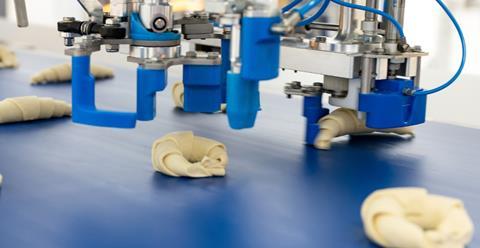
However, the difficulty arises when a bakery examines all the different SKUs it needs to produce and starts putting them through on the high-speed lines rather than using smaller, more flexible models that take a much shorter time to clean down between batches. “They can suddenly find themselves running at a much lower line efficiency. High-speed lines are intended to run for several hours or even an entire shift without stopping before changing over. Automation is designed for very few changeovers,” says Johnson. “The more times you have to stop the line and change over, the more you’ve lost that benefit.”
“Automation is designed for very few changeovers. The more times you have to stop the line and change over, the more you’ve lost that benefit”
Manufacturers also need to think in terms of the post-line process and what that means working back up the line, he notes. So, for example, the product might be going into ovens for baking, then a chiller – or might simply come off the line and go into the freezer in its raw state for baking later. Either way, ovens and freezers are huge energy drains and bakery manufacturers are simply not going to switch off an oven to wait for the next batch of products to come through as it can take too long for that oven to reheat thereby wasting energy and costing the business accordingly, he argues.
Much of this is due to the way the industry has evolved, he acknowledges. While a company might have started out providing 10 SKUs when they first invested in a high-speed line, it might now be faced with producing 25 different SKUs, exacerbating the production challenge encountered as the years go by. “With that many new SKUs and the subsequent smaller runs, many industrial bakers find themsleves in the position where more and more time is spent changing over vs running,” he says.
“Instead of placing smaller, niche or more difficult developing products on that type of line, bakery manufacturers would be better placed to also invest in a smaller, more flexible line that costs a fraction of the high-speed lines, but is easier to maintain, quicker to clean down and requires less labour involvement,” he adds. “The more flexible lines – which can be only nine or 10 metres long compared to a big industrial production line at, say, 80 metres long – have lighter tooling and changes can be undertaken by one operator as opposed to maybe two or three. By transferring the lower-volume SKUs to a more ‘flexible’ line, the high-speed industrial line can be kept free for high-volume products with fewer changeovers. The savings are therefore across energy, labour and efficiency.”
Moreover, even the large industrial bakers cannot afford to ignore the smaller SKUs – be it vegan, gluten-free, flatbreads – as, in order to be listed by the large multiple retailers, in particular, they need to be able to keep up with market trends and supply a full product range.
The Fritsch solution
This, he says, is where a company like Fritsch – a subsidiary of Multivac since 2019 – comes in. The German group covers a broad equipment range from the largest industrial machines, down to production lines for the smaller artisanal bakeries. “We are able to supply a big industrial line, but we are also able to offer flexible lines made to the same standard,” he says. “The latter can also run 24/7, but they’re designed to be much more flexible, providing the clear line efficiencies for smaller-batch goods.
“Let’s say, for example, they have to make 200,000 products a week of a certain type – obviously they can make 30,000 products an hour on a high-speed line – but they also need to make 7000 an hour for a different product… we can look at where the optimum split for each product occurs, along with the labour required to run different lines, which is obviously critical. We can analyse the data to help the manufacturer look at the challenge from a different point of view, break it down per product and advise on the correct mix of investment to optimise all those efficiency factors. So, instead of them just saying they need to add in another high-speed line, which could cost them millions of pounds, they might be better to also invest in a smaller, more flexible line – which can cost just one-tenth of that outlay and gives them a more compelling argument with their company board to obtain investment funding.”
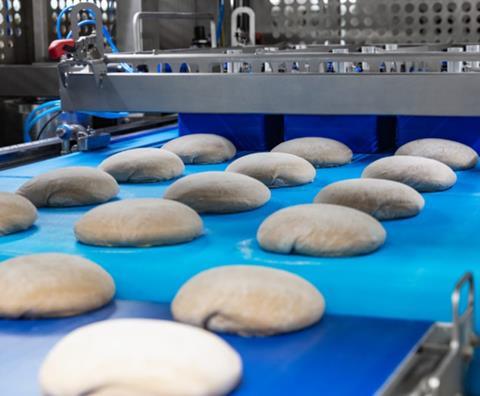
At Fritsch in Germany, senior director customer experience Stefan Praller agrees that it makes no sense to start up an industrial line for smaller-batch products. Fritsch’s Impressa lines offer the high-speed automatic production any large bakery manufacturer might need. However, its smaller Multiflex and Varioflex lines can handle a variety of products, ranging from croissants, horns and salted sticks to looped pretzels, pizzas and doughnuts for lower-volume runs.
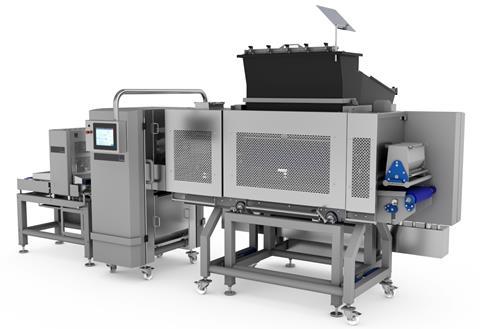
Meanwhile, one of its latest launches is the compact Progressa bread line for medium sized business combining a sheeting line with a processing line and designed to produce artisanal-style breads. “We have a basic configuration, which means that there is a dough sheeter, a satellite head or SDR and guillotine with a weighing system. This would make up a line of about 5 metres,” he says. “So it’s really small and easy to fit within a production facility. Customers can then add options depending on what they want to produce. So, for example, if they want to try round, moulded bread rolls, they can add in a round moulder at the end of the line or use an artisan make-up table to try out different styles of products.”
New product development
Smaller lines give the added advantage of being able to test out new products, such as free-from or developing a new shape for the market, he points out. As another example, he cites the need to handle stickier doughs on free-from products. As such, Fritsch has developed patented solutions tailored to different market needs, such as a soft dough sheeter or a variety of tooling on lines to handle challenges such as cutting and turning croissants.
“The Fritsch approach is always to start with the product – because this is what the customer wants to have, at the end of the day,” says Praller. “So it’s a question of finding out what the product is, then moving to the process of how to produce the product and only then talking about the line and figuring out the best options.” All of the solutions developed on Fritsch’s smaller lines are scalable up to the larger industrial lines, should new products in the market prove successful.
The company’s World of Bakery test centre in Germany enables customers to trial new products. “Normally the first step would be to invite customers to come here and see a demonstration of the equipment, so we define the recipe and the raw materials to show how the equipment works,” says Praller. “The next step would be test the product with their recipe and materials to simulate more or less the same environment and product they want to produce and see how it develops.”
In essence, the equipment is then designed around the needs of the bakery customer to optimise production flexibility. In addition, notes Johnson, the company is able to offer advice on further handling beyond the line, as it has links with other third-party companies, such as mixing, oven or refrigerator manufacturers, so that it can discuss the best process or configuration for the products from start to finish.
For more information on the equipment Fritsch has to offer, contact paul.johnson@multivac.co.uk
